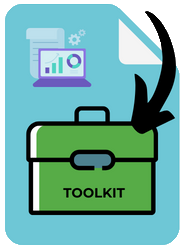Tax Planning
Last-Minute Year-End Tax Deductions for Existing Vehicles
It’s time to examine your existing business and personal (yes, personal) cars, SUVs, trucks, and vans for some profitable year-end business tax deductions.
In this article, first we will look at your prior and existing business vehicles that you or your pass-through business owns. Then we will take a look at your personal vehicles as a possible source for a last-minute tax-saving deduction.
Let’s start with prior and existing business vehicles.
Your first step is to identify your gain or loss on sale. Once you have the gain or loss, know these basic rules:
- Gains attributable to depreciation produce ordinary income.
- Gains in excess of original basis produce capital gains. (This is unlikely to happen with most business vehicles, but it can happen with classic and antique business vehicles because they can go up in value.)
- Losses on business vehicles produce ordinary deductions.
You report gains and losses on IRS Form 4797, which means those gains and losses travel outside of the business income and expense categories and thus have no effect on self-employment taxes.
Now you have the basic rules. In general, at this time of year, we suspect you are looking for tax deductions that may come from your vehicle loss deductions, so that’s where we will look.
Described below are four existing-vehicle tax-deduction strategies that you may be able to use. As with all year-end strategies, don’t wait! If you want the deductions this year, you need to complete the required action on or before December 31, 2022.
1. Take Back Your Child’s or Spouse’s Car and Sell It
We know—this sounds horrible. But stay with us.
What did you do with your old business car? Do you still have it? Is your child driving it? Or is your spouse using it as a personal car?
We ask because that old business vehicle could have a big tax loss embedded in it. If so, your strategy is easy: sell the vehicle to a third party before December 31 so you have a tax-deductible loss this year.
Your loss deduction depends on your percentage of business use. That’s one reason to sell this vehicle now: the longer you let your spouse or teenager use it, the smaller your business percentage becomes and the less tax benefit you receive.
Planning tip. Consider buying a replacement vehicle for your teenager or spouse before taking away his or her vehicle—this is not a tax tip, but a family harmony tip.
If the old business vehicle would produce taxable gain, do nothing. You want the personal-use percentage to continue to grow and to reduce your ultimate tax bite.
2. Self-Employed? Use the Buy-and-Sell Strategy
All business vehicles have gain or loss on sale.
The Tax Cuts and Jobs Act (TCJA) eliminated the tax-deferred exchange for vehicles. Now the vehicle trade-in is nothing more than a sale of the vehicle to the dealer.
Thanks to this new TCJA rule, many self-employed taxpayers will come out ahead because their trade-ins automatically take advantage of the buy-and-sell strategy.
Here’s how the strategy works:
- The sale to a third party or the trade-in “sale” of your existing business vehicle produces a gain or loss that does not increase or decrease your self-employment taxes.
- The purchase of the replacement vehicle creates depreciation and, if elected, Section 179 expensing deductions. These deductions reduce your self-employment taxes.
Example. Billy trades in his old zero-basis business vehicle. The dealer gives him $17,000 as a down payment on his replacement vehicle. This creates a $17,000 taxable gain ($17,000 trade-in selling price minus a zero basis).
On this gain, Billy does not pay any self-employment taxes. Why? The gain is a Section 1231 gain that Billy reports on his IRS Form 4797. The gain never gets to Billy’s Schedule C or his Schedule SE.
On the purchase of his new SUV with a gross vehicle weight rating of greater than 6,000 pounds, Billy uses bonus depreciation on his 100 percent business-use percentage and deducts $41,000. Billy, who makes about $125,000 a year, saves $5,793 in self-employment taxes ($41,000 x 14.13 percent). (1)
In summary, Billy’s taxes look like this on December 31: (2)
- Taxable gain of $17,000
- Bonus depreciation deduction of $41,000
- Income tax savings of $7,680 (32 percent x [$41,000 – $17,000])
- Self-employment tax savings of $5,793
To make the gain and depreciation offset, Billy simply traded in his old vehicle on the new vehicle. Then the new law took over, making that trade a sale, which gives him the buy-and-sell benefits described above.
3. Cash In on Past Vehicle Trade-Ins
In the past (before 2018), when you traded vehicles in, you pushed your old business basis to the replacement vehicle under the old Section 1031 tax-deferred exchange rules. (But remember, this rule doesn’t apply any longer to Section 1031 exchanges of vehicles or other personal property occurring after December 31, 2017. (3))
Regardless of whether you used IRS mileage rates or the actual-expense method for deducting your business vehicles, you could still find a big deduction here.
Check out how Sam finds a $27,000 tax-loss deduction on his existing business car. Sam has been in business for 11 years, during which he:
- converted his original personal car (car one) to business use;
- then traded in the converted car for a new business car (car two);
- then traded in car two for a replacement business car (car three); and
- then traded in car three for another replacement business car (car four), which he is driving today.
During the 11 years Sam has been in business, he has owned four cars. Further, he deducted each of his cars using IRS standard mileage rates.
If Sam sells his mileage-rate car today, he realizes a tax loss of $27,000. The loss is the accumulation of 11 years of car activity, during which Sam never cashed out because he always traded cars. (This was before he knew anything about gain or loss.)
Further, Sam thought his use of IRS mileage rates was the end of it—nothing more to think about. (Wrong thinking here, too.)
Because the trades occurred before 2018, they were Section 1031 exchanges, and so the trades deferred the tax results to the next vehicle. IRS mileage rates contain a depreciation component. That’s one possible reason Sam unknowingly accumulated his big deduction.
To get a mental picture of how this one sale produces a cash cow, consider this: when Sam sells car four, he is really selling four cars—because the old Section 1031 exchange rules added the old basis of each vehicle to the replacement vehicle’s basis.
Examine your car for this possible loss deduction. Have you been trading business cars? If so, your tax-loss deduction could be big!
And this most satisfactory result is true with both the IRS mileage-rate method and the actual-expense method for deducting your vehicles.
If you have been trading in your cars, calculate your adjusted basis and compare it with your possible selling or trade-in price to see your expected gain or loss on sale. If the loss is large and you are in need of tax deductions, sell or trade in that vehicle on or before December 31.
4. Put Your Personal Vehicle in Business Service
Lawmakers reinstated 100 percent bonus depreciation, and that creates an effective strategy that costs you nothing but can produce solid deductions.
Are you (or your spouse) driving a personal vehicle? Would you like to increase your tax deductions for this year? If so, read the article linked above.
Warning! The cash-basis corporation must pay the personal vehicle reimbursement to the shareholder-employee on or before December 31, 2022, to get the deduction in 2022. You will see the reimbursement strategy in the article linked just above.
Big picture. This strategy allows you to take an existing personal vehicle, convert it to business use, and find a solid business deduction this year.
Takeaways
Your existing vehicle can produce last-minute 2022 tax deductions with one of the four strategies described in this article and summarized below:
- Did you give your old business vehicle to your child or spouse? Find out whether that vehicle has a business loss deduction inside it. If it does, take the vehicle back from your child or spouse and sell it so you can deduct the business loss.
- Are you self-employed? If so, use the buy-and-sell vehicle strategy before December 31 to reduce both your income taxes and your self-employment taxes.
- Have you been trading in your old business vehicles on their replacements? If so, calculate your possible loss deduction now. You might find a big deduction.
- Do you or your spouse own a vehicle (new or used) that you purchased but never deducted for tax purposes? If so, convert that personal vehicle to business use to take advantage of the new 100 percent bonus depreciation.
1 On Schedule SE, where Billy computes his self-employment tax, he takes 92.35 percent of his Schedule C income and then applies the 15.3 percent self- employment tax. This gives him a net savings of 14.13 percent (15.3 percent x 92.35 percent).
2 Had the TCJA not eliminated Section 1031 tax-deferred exchanges for vehicles and other personal property, Billy’s taxes would have looked like this: taxable gain of $0, bonus depreciation of $24,000, and self-employment tax savings of $3,391.
3 IRC Section 1031(a).
SERVICES WE OFFER RELATED TO THIS TOPIC
The information contained in this post is for general use and educational purposes only. However, we do offer specific services to our clients to help them implement the strategies mentioned above. For specific information and to determine if these services may be a good fit for you, please select any of the services listed below.
The 4x4 Financial Independence Plan ˢᵐ
The Smart Tax Minimizer (For Consumer and Home-Based Businesses) ˢᵐ
The Smart Tax Planning System for Business Owners ˢᵐ
Coaching and Consulting


EP 0012. The Three Generations of Annuities
The Financial Independence Now Podcast Hosted by Randy LuebkeIn Episode 12 of the Financial Independence Now podcast,...
11 Financial Tips to Make Caregiving Easier
Tax Planning Caregivers generally tend to their elderly/ disabled family members as a labor of love, but it can also...
EP 0011. Budgeting for Dummies
The Financial Independence Now Podcast Hosted by Randy LuebkeIn this episode of Financial Independence Now, host Randy...




